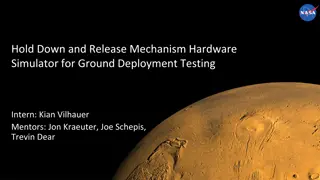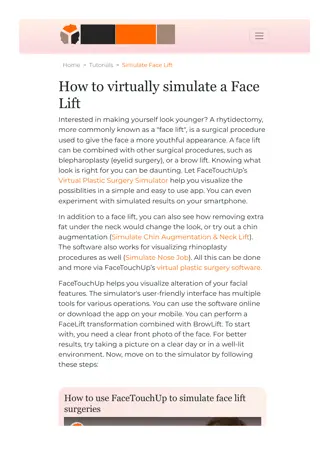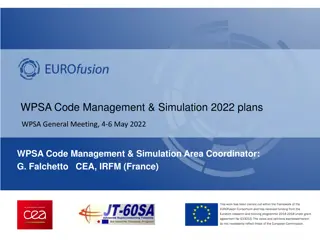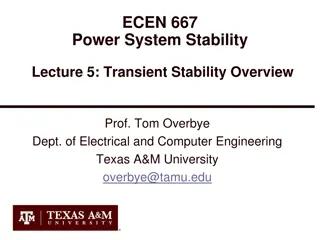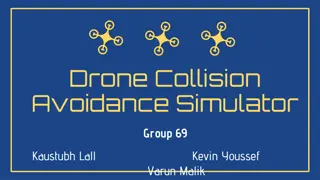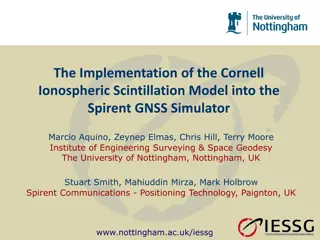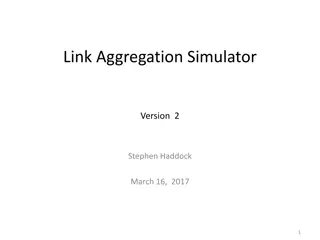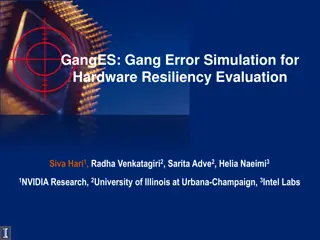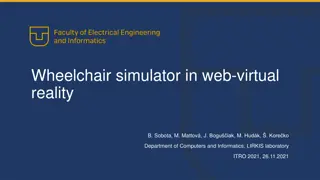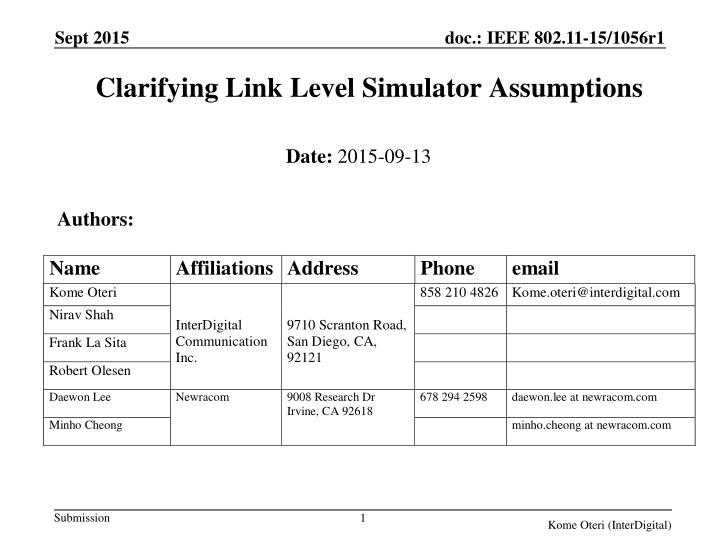
Link Level Simulator Assumptions in IEEE 802.11 Standards
Explore the clarifications and updates on simulation assumptions for link level simulators in IEEE 802.11 standards, focusing on parameters, impairments, and models. This analysis sheds light on how various assumptions impact simulation results and the need for adjustments in newer standards like 802.11ax.
Download Presentation

Please find below an Image/Link to download the presentation.
The content on the website is provided AS IS for your information and personal use only. It may not be sold, licensed, or shared on other websites without obtaining consent from the author. If you encounter any issues during the download, it is possible that the publisher has removed the file from their server.
You are allowed to download the files provided on this website for personal or commercial use, subject to the condition that they are used lawfully. All files are the property of their respective owners.
The content on the website is provided AS IS for your information and personal use only. It may not be sold, licensed, or shared on other websites without obtaining consent from the author.
E N D
Presentation Transcript
Sept 2015 doc.: IEEE 802.11-15/1056r1 Clarifying Link Level Simulator Assumptions Date: 2015-09-13 Authors: Name Kome Oteri Nirav Shah Affiliations Address InterDigital Communication Inc. Phone 858 210 4826 Kome.oteri@interdigital.com email 9710 Scranton Road, San Diego, CA, 92121 Frank La Sita Robert Olesen Daewon Lee Newracom 9008 Research Dr Irvine, CA 92618 678 294 2598 daewon.lee at newracom.com Minho Cheong minho.cheong at newracom.com Submission 1 Kome Oteri (InterDigital)
Sept 2015 doc.: IEEE 802.11-15/1056r1 Motivation The simulation assumptions of the different types of system level simulators have been well defined in the Evaluation Methodology document [1]. The results have also been calibrated in [2]. Link level simulation results obtained may vary widely based on the simulation assumptions and impairments such as the CFO, phase noise and timing offset models. We would like to clarify the assumptions used for various link level simulator parameters, impairments, assumptions and models. We would like to update the 802.11ac assumptions and impairments found in [3] to reflect the requirements for 802.11ax and place these in the evaluation methodology document. Submission 2 Kome Oteri (InterDigital)
Sept 2015 doc.: IEEE 802.11-15/1056r1 Current802.11ac Impairments [3] PA non-linearity Carrier Frequency Offset : DL [-20,20] ppm UL MU-MIMO [-2,2] kHz Timing acquisition/preamble detection on a per-packet basis Phase Noise : Uses pole zero model at both Tx and Rx Noise Figure : 10 dB Antenna Configuration : ULA with lambda separation Fluorescent Lighting : Not considered Timing : UL MU from [-100 to 100] ns Submission 3 Internal Confidential: Internal Use Only InterDigital Confidential and Proprietary Kome Oteri (InterDigital)
doc.: IEEE 802.11-15/1056r1 Sept 2015 Simulation Assumption Examples in 802.11ax DC tone design [4] 40 ppm CFO before frequency correction SISO 1x1, 20 MHz results [4] Channel estimation, CFO estimation, phase tracking all real, initial phase noise added SISO 1x1, 80 MHz results [5] Channel estimation real, CFO estimation real, phase tracking is assumed present UL OFDMA, 20 MHz: [4] Frequency offset of each user is uniformly distributed over +/- 235KHz and +/- 100KHz UL MU-MIMO, 20 MHz [6] Frequency offset of each user distributed over 400 Hz Submission 4 Internal Confidential: Internal Use Only InterDigital Confidential and Proprietary Kome Oteri (InterDigital)
doc.: IEEE 802.11-15/1056r1 Sept 2015 Typical TGax Link Level Simulations We will show how typical TGax link level simulator results can change based on differing assumptions Some of the assumptions can be clearly inferred from the 802.11ac assumptions [3] and the latest 80211ax specification framework [10] Some of the assumptions need to be further defined Submission 5 Internal Confidential: Internal Use Only InterDigital Confidential and Proprietary Kome Oteri (InterDigital)
Sept 2015 doc.: IEEE 802.11-15/1056r1 Clearly Defined Assumptions Submission 6 Kome Oteri (InterDigital)
Sept 2015 doc.: IEEE 802.11-15/1056r1 Assumptions to be Clarified Parameter Value CFO Model Residual / CFO Compensation & Tracking PPM / kHz Randomly distributed within [x, y] over a uniform distribution, x and y undefined Integrated Phase Noise None / Model [3] Timing Acquisition Ideal / Per-packet-basis Timing offset Uniform over users, [0, , Tmax], Tmax undefined I/Q Imbalance model Not specified These parameters may result in widely varying link level performances Submission 7 Kome Oteri (InterDigital)
Sept 2015 doc.: IEEE 802.11-15/1056r1 Simulator 1 Results No Impairments Slide 17 from 11-15/0569r1 [7] Slide 42 from 11-15/0330r5 [4] No CFO Residual CFO CFO & Phase noise with CFO, time and phase tracking Slide 33 from 11-15/0349r2 [5] Submission 8 Kome Oteri (InterDigital)
Sept 2015 doc.: IEEE 802.11-15/1056r1 Simulator 2 Assumptions RU Size 242 RU (234/8 data/pilot) 996 RU (980/16 data/pilot) MCS 9 (256QAM, 5/6) 9 (256QAM, 5/6) Tx/Rx Ant. 1x1 1x1 Channel Est. real real Initial CFO None / 20 kHz None / 20 kHz CFO Compensation & Tracking None / Real None / Real Phase Noise (both at Tx and Rx) None / 11n None / 11n Channel Model Ch.D Ch.D APEP_LENGTH 1000 Byte 1000 Byte Coding BCC LDPC (25 iterations) Time Synchronization Ideal / Real Ideal / Real Receiver Linear receiver Linear receiver (Exact LLR) Submission 9 Kome Oteri (InterDigital)
Sept 2015 doc.: IEEE 802.11-15/1056r1 Simulator 2 Results Submission 10 Kome Oteri (InterDigital)
Sept 2015 doc.: IEEE 802.11-15/1056r1 Conclusion We show that the link level results may vary widely based on impairment assumptions such as CFO Model and phase noise model We would like these assumptions to be specified in the 802.11ax evaluation methodology document Submission 11 Kome Oteri (InterDigital)
Sept 2015 doc.: IEEE 802.11-15/1056r1 Straw Poll #1 Do you agree to the following? Link level simulator assumptions and impairments shall be clarified for 802.11ax and changes from 802.11ac shall be identified Y/N/A Submission 12 Kome Oteri (InterDigital)
Sept 2015 doc.: IEEE 802.11-15/1056r1 Straw Poll #2 Do you agree with the following? A table listing PHY impairments for 802.11ax shall be added to the EM document Y/N/A Submission 13 Kome Oteri (InterDigital)
Sept 2015 doc.: IEEE 802.11-15/1056r1 References 1. 2. 3. 11-14-0571-10-00ax-evaluation-methodology.docx 11-15-0125-04-00ax-box-1-and-box-2-calibration-results.xlsx 11-09-0451-16-00ac-tgac-functional-requirements-and-evaluation- methodology.doc 11-15-0330-05-00ax-ofdma-numerology-and-structure.pptx 11-15-0349-02-00ax-he-ltf-proposal.pptx 11-15-0602-04-00ax-he-ltf-squence-for-ul-mu-mimo.pptx 11-15-0569-01-00ax-performance-of-1x-2x-and-4x-he-ltf.pptx 11-14-0882-04-00ax-tgax-channel-model-document.docx 11-15-0580-01-00ax-11ax-coding-discussion.pptx 10. 11-15-0132-07-00ax-spec-framework.docx 4. 5. 6. 7. 8. 9. Submission 14 Kome Oteri (InterDigital)
Sept 2015 doc.: IEEE 802.11-15/1056r1 PHY Impairments for 802.11ac [3] Submission 15 Kome Oteri (InterDigital)
Sept 2015 doc.: IEEE 802.11-15/1056r1 PHY Impairments for 802.11ac (ctd) [3] Submission 16 Kome Oteri (InterDigital)


